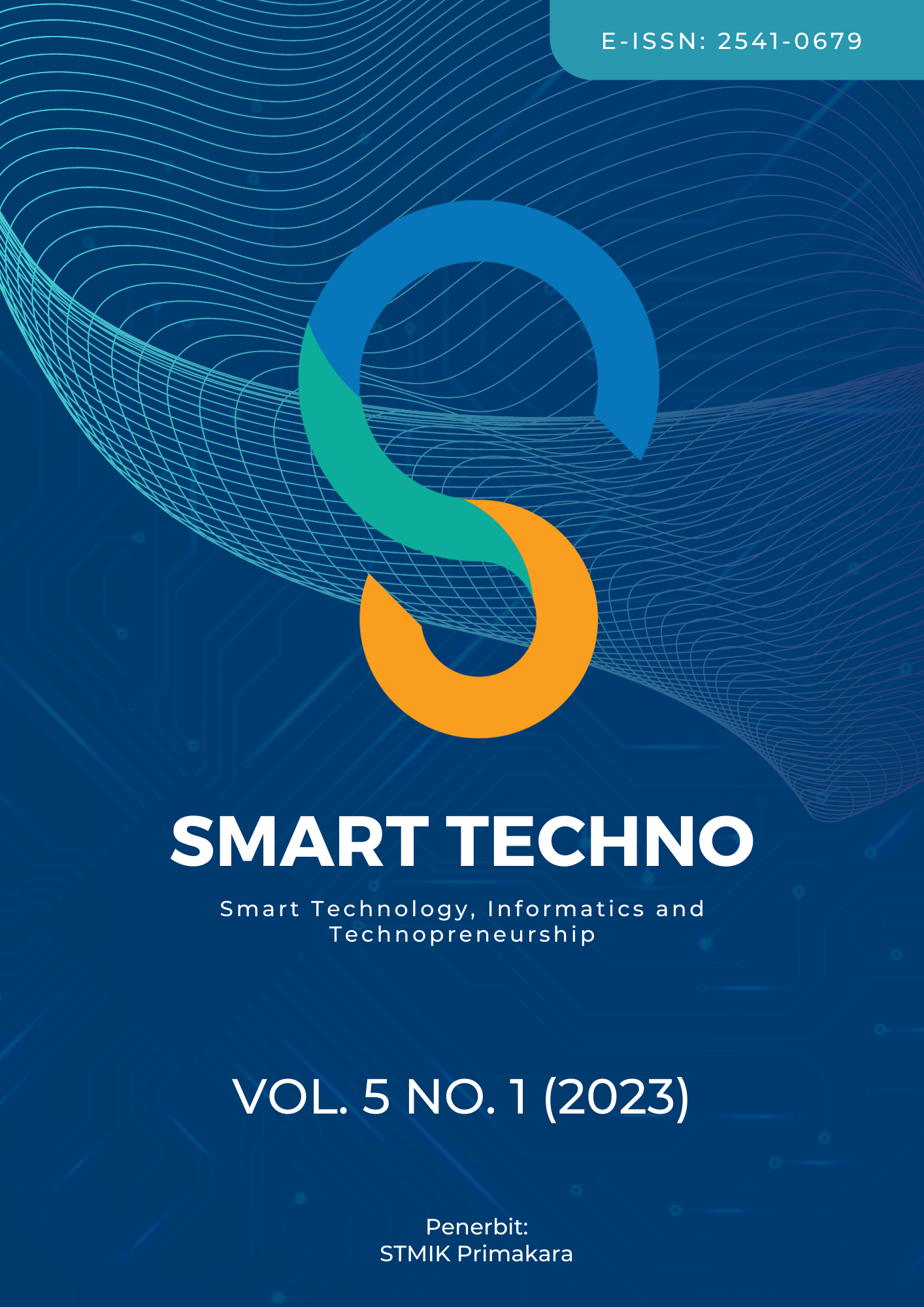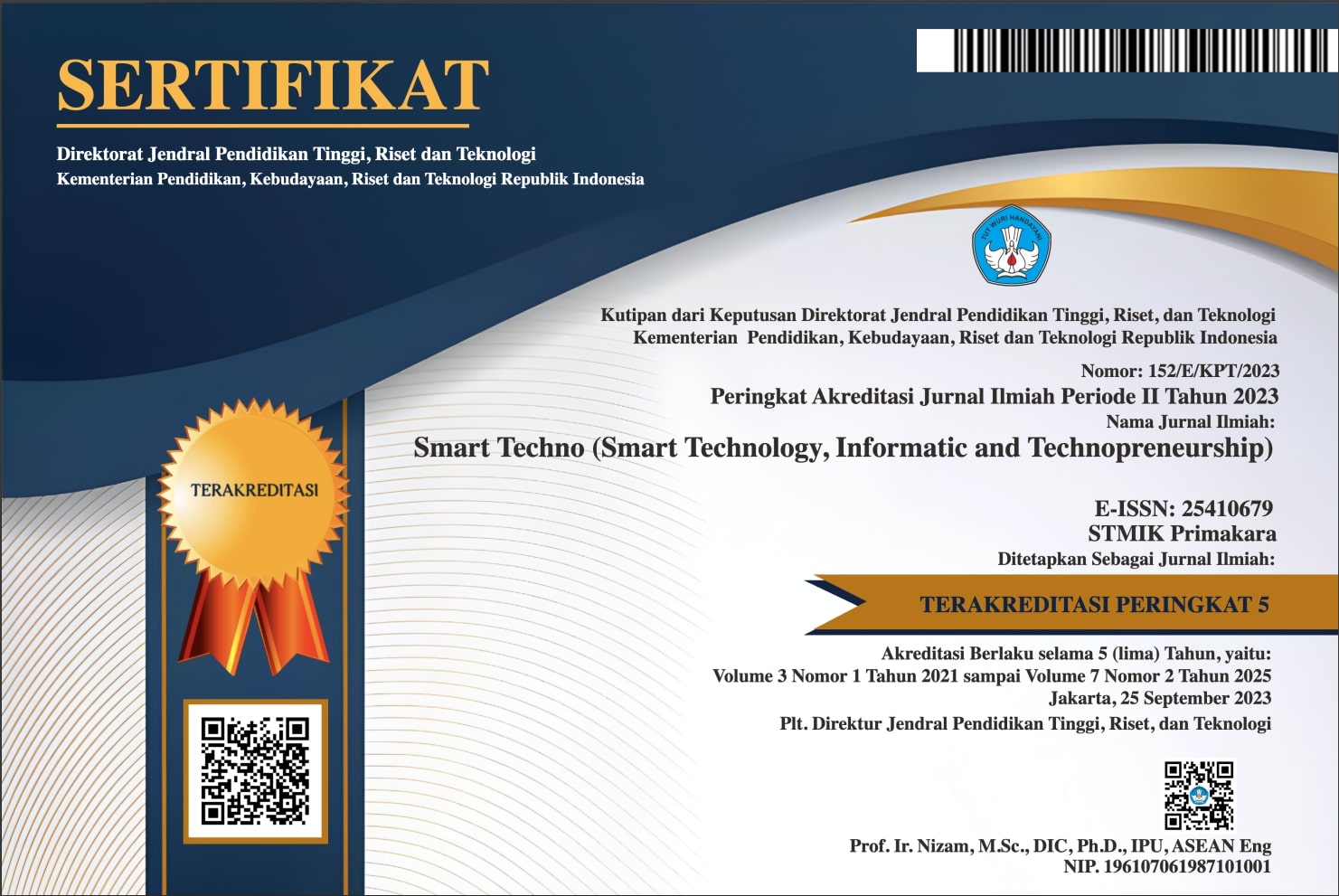Penerapan Algoritma Deteksi Tepi Canny Menggunakan Python Dan Opencv
Abstract
Abstract: Object detection is one step in object recognition in the field of computer vision. The edges of the image characterize the boundaries that distinguish it from other objects and are therefore a very important problem in image processing. Accurate Image Edge Detection can significantly reduce the amount of data and filter out useless information while retaining important structural properties in the image. Since edge detection is at the forefront of image processing for object detection, it is very important to have a good understanding of edge detection algorithms. In this study, applying canny edge detection using python and OpenCV and also compared with other image processing methods. The result is that Canny edge detection has a better performance compared to other algorithms such as LoG (Laplacian of Gaussian), Robert, Prewitt and Sobel.
Downloads
References
[2] S. S. Al-amri, “Image segmentation by using edge detection,” Int. J. Comput. Sci. Eng., vol. 02, no. 03, pp. 804–807, 2010.
[3] A. W. K. Johanes Widagdho Yodha, “PENGENALAN MOTIF BATIK MENGGUNAKAN DETEKSI TEPI CANNY DAN K-NEAREST NEIGHBOR,” Techno.COM, vol. 13, no. 4, pp. 251–262, 2014.
[4] M. G. Nayagam and K. Ramar, “A survey on Real time Object Detection and Tracking Algorithms A survey on Real time Object Detection and Tracking Algorithms,” Int. J. Appl. Eng. Res., no. April, 2015.
[5] Z. Chen, M. Li, and H. Yu, “A 3D Circular Object Detection Method Based on Binocular Stereo Vision,” 2017 10th Int. Congr. Image Signal Process. Biomed. Eng. Informatics (CISP-BMEI 2017), 2017, doi: 10.1109/CISP-BMEI.2017.8301990.
[6] D. J. Muchammad Al Amin, “KLASIFIKASI KELOMPOK UMUR MANUSIA BERDASARKAN ANALISIS DIMENSI FRAKTAL BOX COUNTING DARI CITRA WAJAH DENGAN DETEKSI TEPI CANNY,” MATHunesa J. Ilm. Mat., vol. 2, no. 6, 2017.
[7] M. Hörhan and H. Eidenberger, “An Efficient DCT template-based Object Detection Method using Phase Correlation,” 2016 50th Asilomar Conf. Signals, Syst. Comput., pp. 444–448, 2016, doi: 10.1109/ACSSC.2016.7869078.
[8] P. Jain, N. Delhi, N. Chopra, N. Delhi, V. Gupta, and N. Delhi, “Automatic License Plate Recognition using OpenCV,” Int. J. Comput. Appl. Technol. Res., vol. 3, no. 12, pp. 756–761, 2014.
[9] W. He and K. Yuan, “An Improved Canny Edge Detector and its Realization on FPGA,” Proc. 7th World Congr. Intell. Control Autom., pp. 6561–6564, 2008.
[10] S. Saluky, “Moving Object Detection on CCTV Surveillance Using the Frame Difference Method,” Inf. Technol. Eng. Journals, vol. 4, pp. 114–122, 2019.
[11] R. Bentler and L. Chiou, “Digital Noise Reduction : An Overview,” Trends Amplif., pp. 67–82, 2006, doi: 10.1177/1084713806289514.
[12] B. Pan, Z. Lu, and H. Xie, “Mean intensity gradient : An effective global parameter for quality assessment of the speckle patterns used in digital image correlation,” Opt. Lasers Eng., vol. 48, no. 4, pp. 469–477, 2010, doi: 10.1016/j.optlaseng.2009.08.010.
[13] B. Magnier, H. Abdulrahman, and P. Montesinos, “A Review of Supervised Edge Detection Evaluation Methods and an Objective Comparison of Filtering Gradient Computations Using Hysteresis Thresholds,” J. Imaging, 2018, doi: 10.3390/jimaging4060074.
Copyright (c) 2023 Saluky, Yoni Marine

This work is licensed under a Creative Commons Attribution 4.0 International License.
Authors who publish with the Smart Techno agree to the following terms:
- Authors retain copyright and grant the journal the right of first publication with the work simultaneously licensed under a Creative Commons Attribution License (CC BY-SA 4.0) that allows others to share the work with an acknowledgment of the work's authorship and initial publication in this journal.
- Authors are able to enter into separate, additional contractual arrangements for the non-exclusive distribution of the journal's published version of the work (e.g., post it to an institutional repository or publish it in a book), with an acknowledgment of its initial publication in this journal.
- Authors are permitted and encouraged to post their work online (e.g., in institutional repositories or on their website) prior to and during the submission process, as it can lead to productive exchanges, as well as earlier and greater citation of published work. (See The Effect of Open Access)







